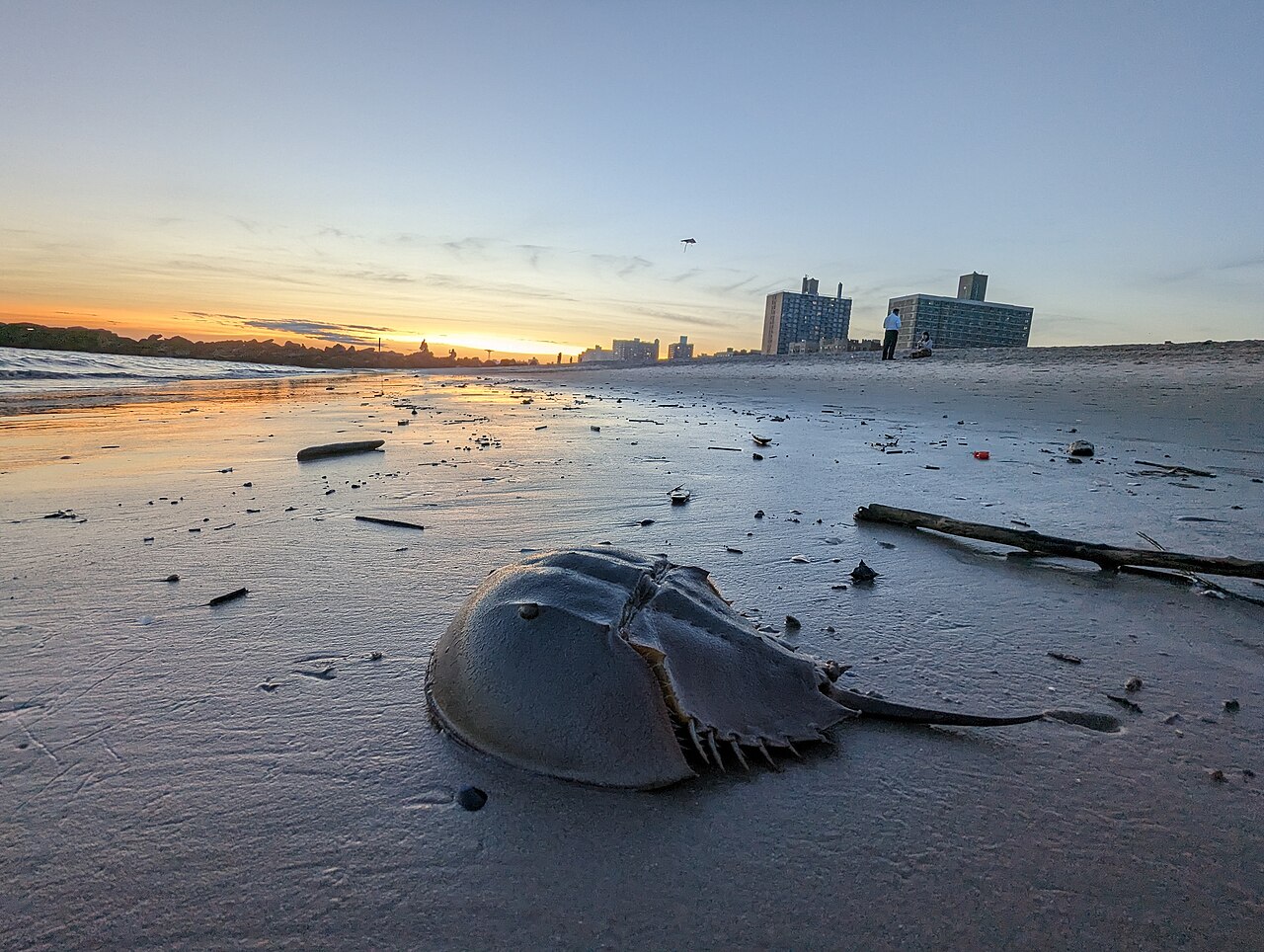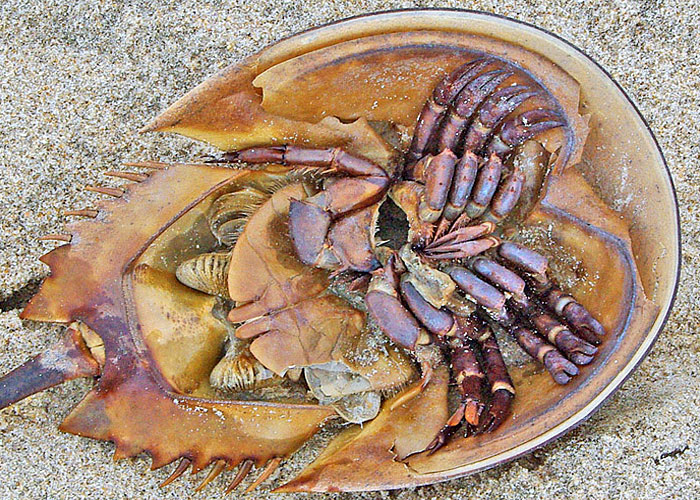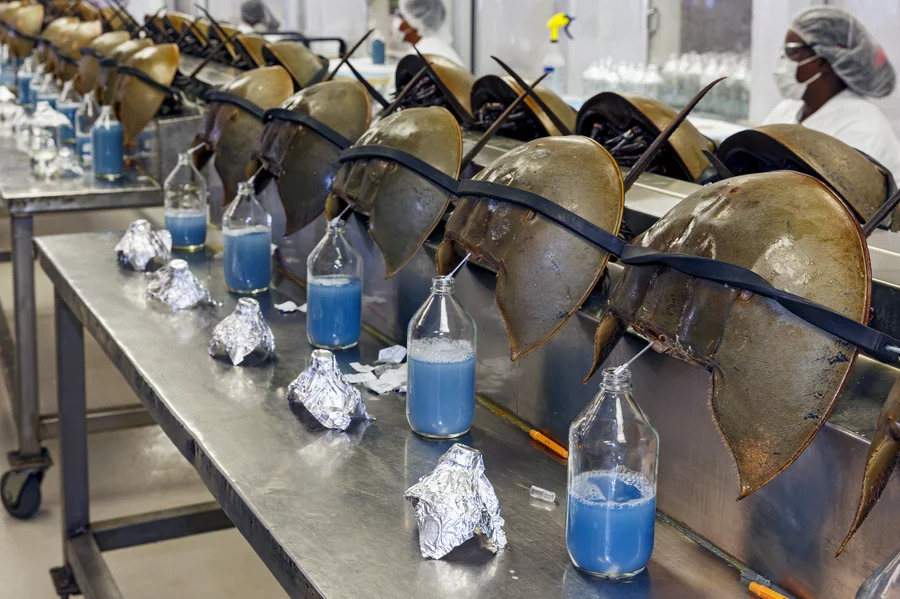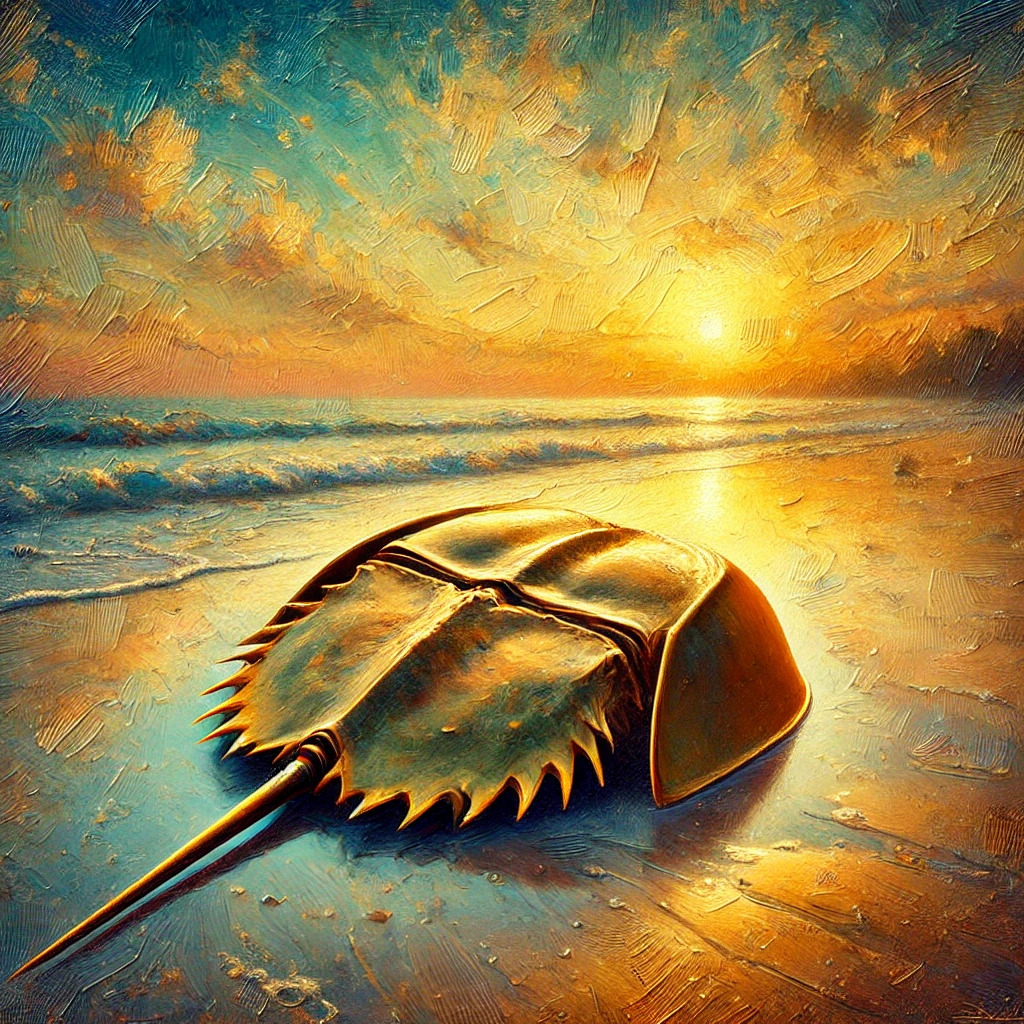Imagine walking along a deserted beach at sunset. The tide has left behind strange armored beings, resembling creatures from a prehistoric era. These are not shells or random debris, but horseshoe crabs, living fossils that have survived hundreds of millions of years, silently witnessing the evolution of life on Earth.

Source - Wikipedia
An Ancestor of the Trilobites
The horseshoe crab (genus Limulus, family Xiphosuridae) is often called a "living fossil" due to its remarkable resemblance to creatures that inhabited the oceans 450 million years ago. Despite its appearance, it is not a crustacean but a chelicerate, more closely related to spiders and scorpions than to crabs or shrimp. Its body is divided into three main sections: the prosoma (or cephalothorax), the opisthosoma (or abdomen), and the long telson, a rigid tail-like structure that helps it flip itself over if turned upside down.


Anatomy and Life Cycle
The horseshoe crab has a rigid exoskeleton that protects it from predators and environmental elements. Beneath the prosoma, it has five pairs of legs, with the first four used for locomotion and the fifth for handling food. Its compound eyes, located on the upper part of the carapace, allow it to detect movement and changes in light, while additional photosensitive structures are distributed across its body to enhance its environmental perception.
Internally, the horseshoe crab has a tubular heart that pumps copper-rich blue blood and a relatively simple nervous system. Its respiratory system consists of book gills, which enable it to extract oxygen from the water. Its life cycle begins with eggs laid on sandy beaches, where larvae emerge and develop in shallow waters before reaching maturity after multiple molts.

Source - Horseshoe Crabs: Anatomy and Behavior
Hunting and Feeding
Despite its primitive appearance, the horseshoe crab is an efficient predator of small benthic invertebrates. It feeds on mollusks, annelids, and other organisms by digging into the seabed with its front legs. Its mouth, located between its legs, is designed to crush and ingest food in small pieces before processing it through the digestive system.
Blue Blood and Its Scientific Value
One of the most fascinating aspects of the horseshoe crab is its blue blood, which is due to the presence of hemocyanin, a copper-based protein that performs the same function as hemoglobin in vertebrates. However, what makes horseshoe crab blood truly unique is its extraordinary ability to detect bacterial endotoxins. Because of this, the blood extracted from these creatures is used in pharmaceutical testing to ensure the sterility of medications and medical devices.

Horseshoe crabs are bled at a facility in Charleston, S.C., in June 2014.Ariane Müller
A Survivor at Risk
Despite its resilience to climate change and natural disasters, the horseshoe crab is now threatened by human activity. Overfishing for biomedical use, the destruction of coastal habitats, and environmental changes are reducing its populations. If a species has survived nearly half a billion years but is now at risk due to human actions, perhaps we should pause and reflect.
The Horseshoe Crab in Myth and the Future
This ancient creature has fascinated humans for centuries. In some Asian cultures, its shells are used in rituals and as symbols of protection. Some researchers have even speculated that medieval sailors' stories of sea monsters might have originated from sightings of groups of horseshoe crabs in shallow waters.
But what does the future hold for the horseshoe crab? Could it adapt to new environmental conditions, perhaps developing even greater survival abilities? Might we witness its evolution into a form even more suited to enduring a rapidly changing world? Perhaps, millions of years from now, the descendants of the horseshoe crab will still be here, silent witnesses to the planet's ongoing transformation.
The horseshoe crab is not just a relic of the past, but a living reminder of life's resilience and adaptability. Protecting these creatures means preserving a piece of Earth's natural history, a direct link to a remote past that continues to amaze us.
Source - YouTube - Brave Wilderness








Leave a Comment